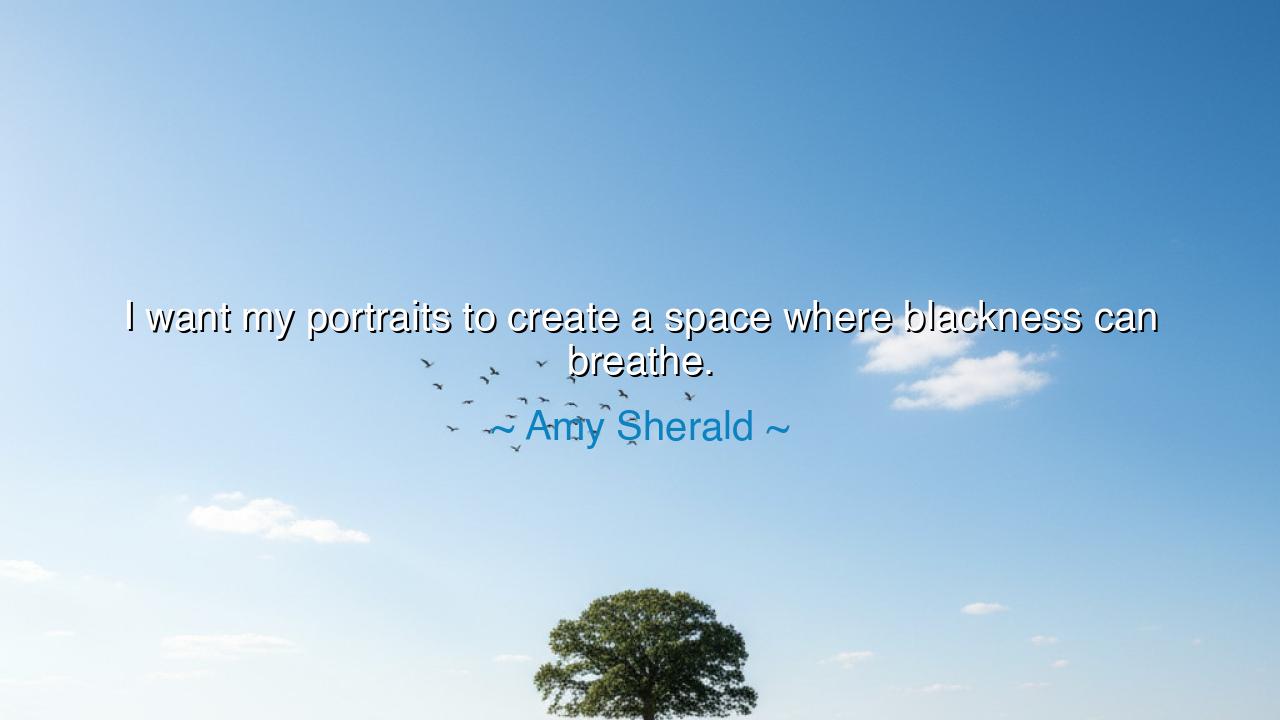
I want my portraits to create a space where blackness can






Hear the words of Amy Sherald, painter of spirit and keeper of truth: “I want my portraits to create a space where blackness can breathe.” These words are not soft, but weighty; they are not a casual wish, but a declaration of liberation. For she speaks not only of art upon canvas, but of the struggle of a people to exist without suffocation, to dwell in dignity, to breathe fully and freely in a world that too often sought to press the air from their lungs.
What is it for blackness to breathe? It is to live without being bound by stereotypes, without being forced into masks crafted by others. It is to move without the crushing weight of history’s chains distorting every step. To breathe is to be seen as whole, as beautiful, as human. In her portraits, Sherald does not paint black bodies as symbols, nor as burdens, but as beings—radiant, nuanced, alive. Her art opens a space where the spirit of black life may exhale, expanding into its true shape.
This is not new in the struggle of history. Recall the Harlem Renaissance of the 1920s, when poets, painters, and musicians carved a sanctuary where blackness could indeed breathe. Langston Hughes lifted words like lanterns into the night, Zora Neale Hurston gathered the voices of the folk into timeless stories, and Duke Ellington turned breath itself into music. They built a cultural temple where dignity was restored, where black lives were no longer reduced, but exalted. Their art was not escape, but resurrection.
And think, too, of Frederick Douglass, who once said that the true power of photography was to make visible the humanity of the enslaved and the free. In those images, black men and women stood clothed in dignity, their gazes unbroken, their presence undeniable. They were not caricatures, not faceless masses, but individuals whose souls demanded recognition. Just as Douglass saw the power of images to affirm existence, so Sherald takes up brush and color to affirm, in her time, the right of blackness to breathe.
Her words remind us that art is not merely decoration, but weapon and sanctuary. A portrait can resist the gaze of oppression, can hold space where none was granted, can proclaim: Here is a life, here is a soul, here is beauty beyond denial. When she paints, Sherald is not only capturing a face; she is creating a sacred chamber where breath flows freely, where identity is restored to wholeness. This is no small act—it is rebellion and healing woven together.
The lesson, then, is that all of us, in whatever craft or labor we hold, can become makers of space. If you are a teacher, create a space where every child may breathe without fear. If you are a leader, create a space where the silenced may speak. If you are a friend, create a space where another’s soul can rest without disguise. To create breathing space is to recognize humanity, to honor dignity, to build a world that does not choke the life from those who differ from ourselves.
Practical action flows from this truth: seek to notice where others are suffocated—by prejudice, by silence, by the weight of expectation—and then act to open the air. Support the voices of the marginalized, honor the stories of the overlooked, and challenge the structures that choke life at its root. You need not be a painter to carve such a space; you need only courage, compassion, and vision.
So let it be remembered: Amy Sherald, with brush in hand, gave a gift not only to art but to humanity—the gift of breath. And we, in our own ways, must carry that gift forward. For freedom is not only in laws and battles; it is also in the air we allow each other to breathe. Therefore, build spaces where souls may expand, where dignity may dwell, where blackness—and all humanity—may breathe without fear. This is the work of art, the work of justice, the work of love.






AAdministratorAdministrator
Welcome, honored guests. Please leave a comment, we will respond soon